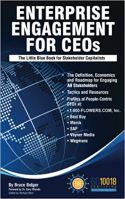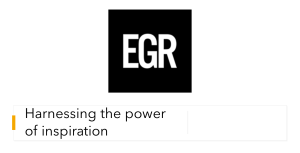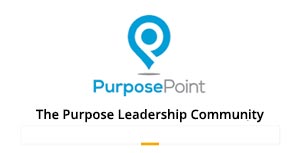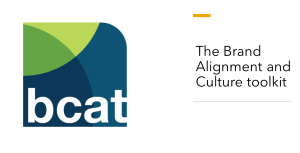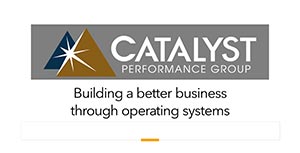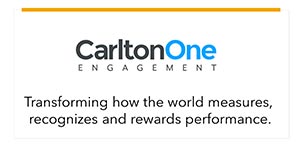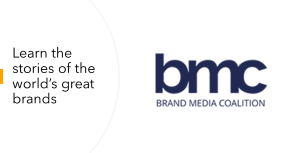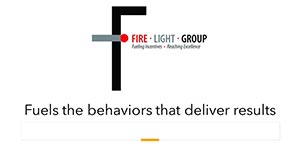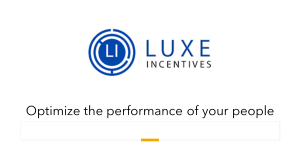Guest Insight: Pension Funds Must Choose the Right Investor Metrics for Human Capital
The U.K.’s Maturity Institute believes it has found the best way for investors to measure value and impact of human capital. ESM first reported on the Maturity Index in the article: ‘New Evaluation Process Aims to Score Any Organization’s HR Maturity’
 By Paul Kearns, Maturity Institute
By Paul Kearns, Maturity Institute
The primary role of the Maturity Institute is to provide a wide-ranging critique of existing human governance and human capital management practice, based on its global standards, in order to develop professional solutions to meet emerging needs. A looming, global need is the challenge for pension funds of providing pensions for aging populations. It can only be resolved if they choose the right investor metrics to ensure human capital is material.
The pension problem can be simply defined: All participants have to be able to produce enough surplus value to provide themselves with a retirement income in the future. This is forcing pension funds to ask companies, “Are you doing everything possible to enable your human capital to produce as much value as possible?” That is why we were contacted by Dr. Larry Beeferman, Director of Harvard Law School’s Pensions & Capital Stewardship Project, at the beginning of 2016. Dr. Beeferman and his Research Associate, Dr. Aaron Bernstein, had written a systematic review of the academic literature in their seminal paper “The Materiality of Human Capital to Corporate Financial Performance” and had concluded that, even if human capital is material, “In sum the debate over causality remains a contested one.” In other words, they could not find convincing evidence that it is existing human capital management practices that make (cause) the difference. (See ESM: “Momentum Grows for Human Capital and Employee Engagement Disclosures by Public Companies.”)
They put us in touch with the Human Capital Management Coalition (the ‘Coalition’), comprising 25 large pension funds, which submitted its petition to the Securities & Exchange Commission on July 6 to change existing rules on the disclosure of human capital information in company reporting. (See ESM: “S.E.C. Petitioned to Mandate Disclosure of Human Capital Investments, Engagement.”)
The generic information they require (they do not specify the detail) is referred to as “investor metrics on human capital.” So have the members of the Coalition got the right metrics? And if so, are companies able to report on them and do they possess the political will to rise to the challenge of improving them?
SHRM, the Society of Human Resources Management, founded in 1948, has over 285,000 members today, many of whom it certifies to provide professional HRM services. Up until as recently as 2010, SHRM had no professional standards, which must beg the question of the quality assurance of its certificated membership. So it appointed its first Director to take on this task and “investor metrics” was arguably the most important of the international workgroups set up to build the first standards. Unfortunately, their entire program of standard setting came to a shuddering halt and collapsed ignominiously in 2012. (See HR Today: “Investor Metrics Withdrawn.”)
Out of this failure, and other similar attempts meeting the same fate, came the spark of inspiration that led to the inauguration of the Maturity Institute (MI) in the same year, with investor metrics as a critical priority. Having first established MI’s founding principles, the vast experience of our multi-disciplined team helped us to make rapid progress, which resulted in the launch of OMINDEX in 2015, on an open source basis. It was designed to provide pension funds and investors with exactly what they wanted and needed. In the text of the Coalition’s petition to the SEC, it states that: For data-driven disclosures, … we believe the Commission needs to provide prescriptive rules as to what must be reported.”
MI exists to help organizations and all their people reap the value of becoming more mature. Maturity can only be reached voluntarily. Regulation and “prescription,” while necessary, should be a last, not first, resort. Boards and executives who are behaving responsibly should be allowed and encouraged to take their own intelligent approach to human capital metrics based on the best advice available. Unfortunately, the professionals they have employed for many years (from SHRM, CIPD and ATD et al), who should already be the human capital management experts, do not have any best advice because they seem unable to agree among themselves on the basic principles or standards required. The Coalition cannot be expected to have known this. They had every right to expect the professional bodies to be doing an evidence-based job. Without the best evidence, they could end up creating a recipe for disaster.
MI’s definition of value is an investor definition (the best possible return on investment in human capital). MI’s principles (the 10 Pillars) provide rock-solid foundations for corporate governance that fully incorporates effective human governance. Our OM 30 instrument was designed to measure whether these are in place. It asks all the right questions and provides a single score with a rating that mirrors the “AAA” scheme of credit rating. This answers the original question of whether a company is improving its Total Stakeholder Value (TSV) enough to provide not only for its own retirees but also, through greater wealth creation, for society at large.
From an SEC perspective, the Coalition’s petition should be viewed as a laudable move, but it echoes previous initiatives in this space based on a misreading of the evidence and so comes with a high probability of failure. Dr. Beeferman’s paper is cited in the Coalition’s petition. If the S.E.C. decides to adopt it, the companies under its jurisdiction need proper guidance on standards of effective human capital management and how to connect their investor metrics to Total Stakeholder Value. MI is the new multi-disciplinary, professional institute that was purpose-built to develop this capability in company leadership and management.
We did not have to wait for regulatory pressure on companies or other exhortations to ask them to improve their human capital reporting because we can tell them clearly that it is in their own interests to do so. The right reporting adds value, not bureaucracy. So we contacted them directly with this message and invited them to engage in the OMINDEX process of scoring themselves, using OM30, in producing their own ratings. It is not a problem for MI if they choose not to engage, because these companies can be rated on the existing evidence anyway. The public information they already provide in their annual reports and on their websites, such has how many training hours they do, reveals a great deal about them even when they don’t want it to. With our guidance, we can ensure they do not report anything in the future that makes them and their HR/training teams look so foolish.
We do try to encourage them further by revealing just how much more value they would create if they stopped treating people as costs and started seeing them in terms of their higher value potential. We have even already produced our first fully integrated report, with our own in-house financial expert, which marries financial and human capital data. The AT&T Report is a window on what is possible.
Our latest project, the 2017 Banking Governance and Culture Report, takes another evolutionary step forward in not just measuring culture, but identifying the nature of its causal effects, in terms of materiality.
The right investor metrics are already available at MI, but they highlight just how far companies still have to go to improve how they manage their precious human resources. This is having a serious knock-on effect on the former professional bodies in HR and training that now have to revisit their professional standards and the development of their membership. The S.E.C. needs to understand all of this – the complete, whole system picture and the value opportunity it affords – before acting accordingly.
For More Information, go to




